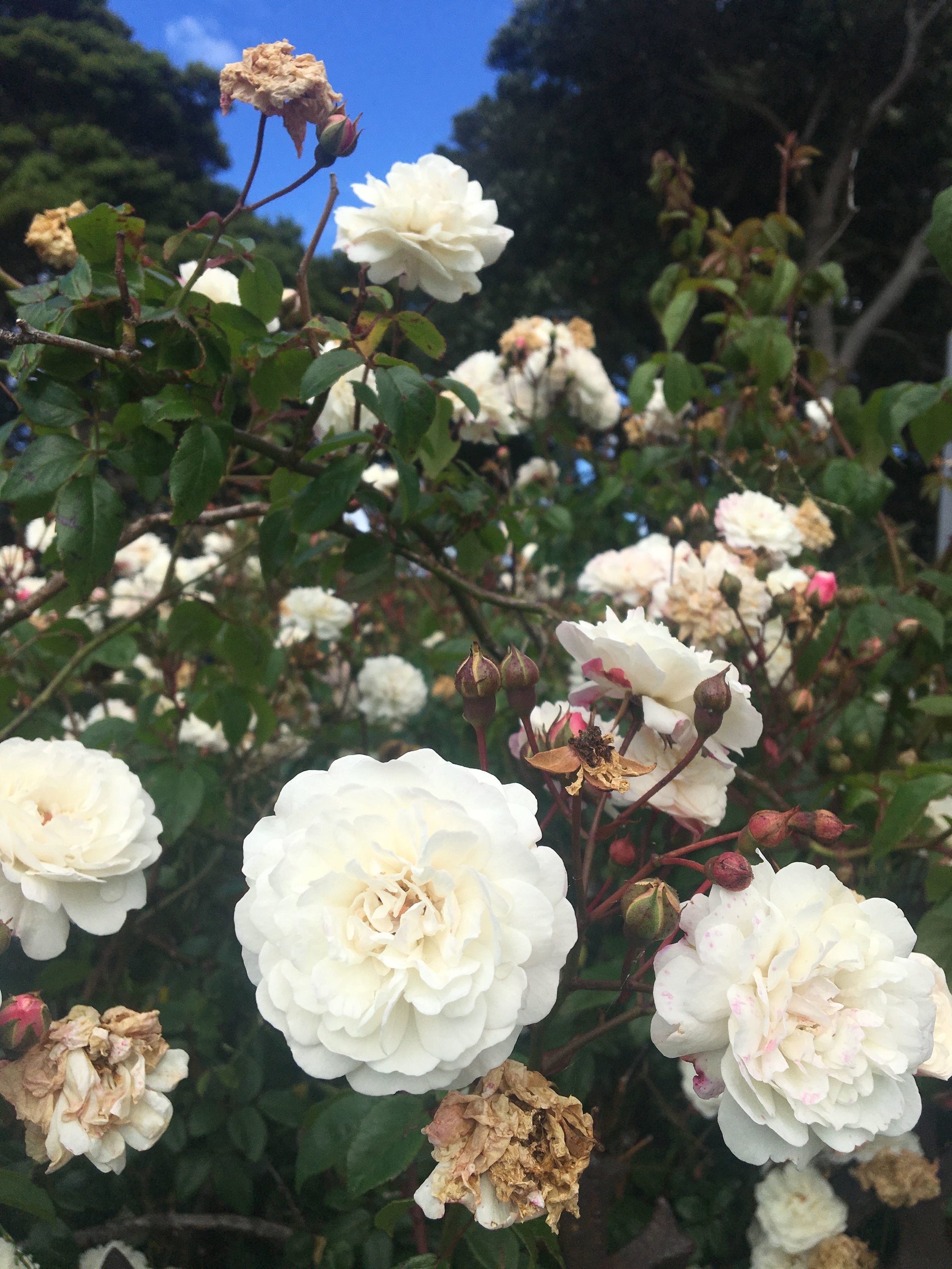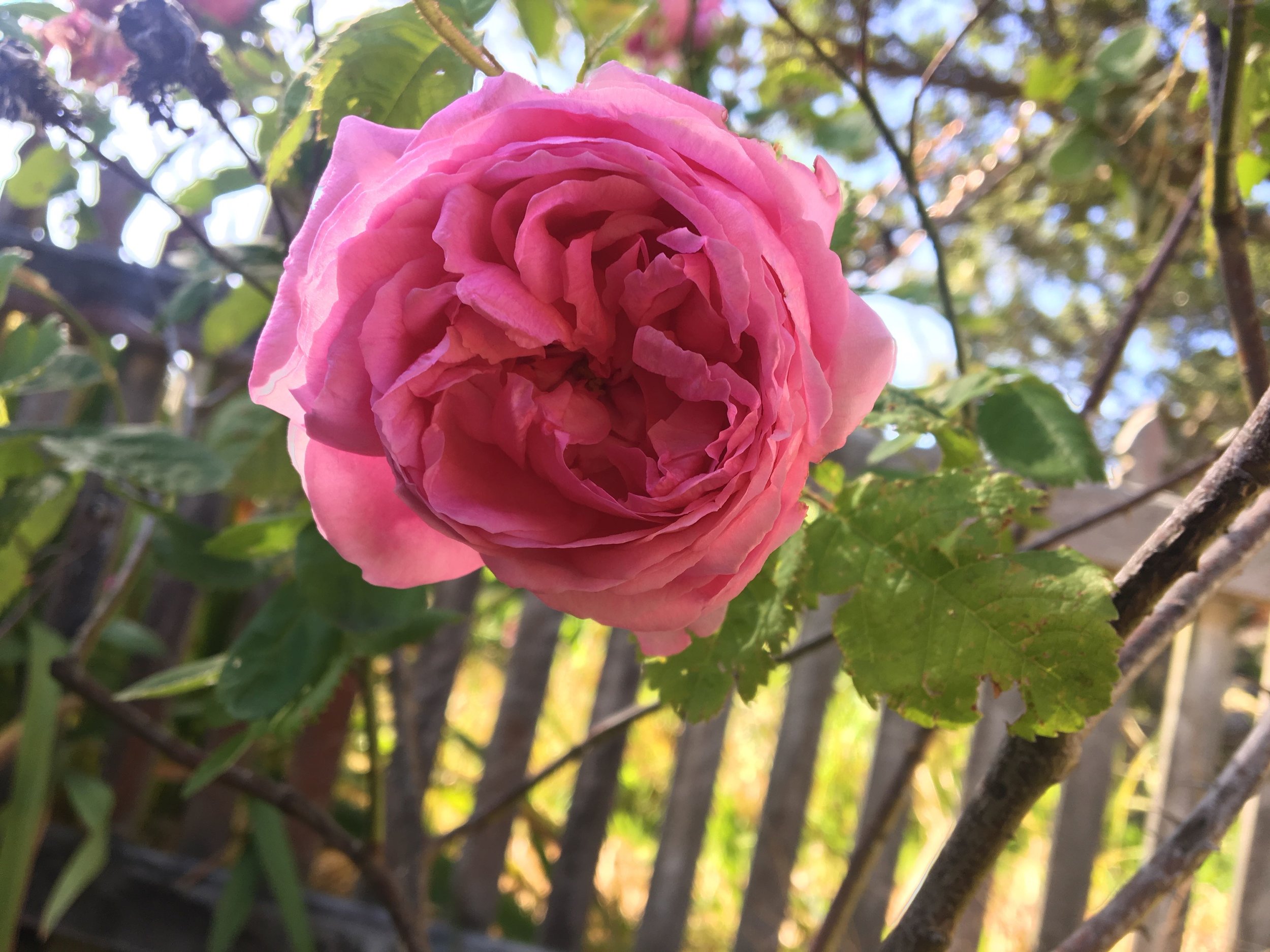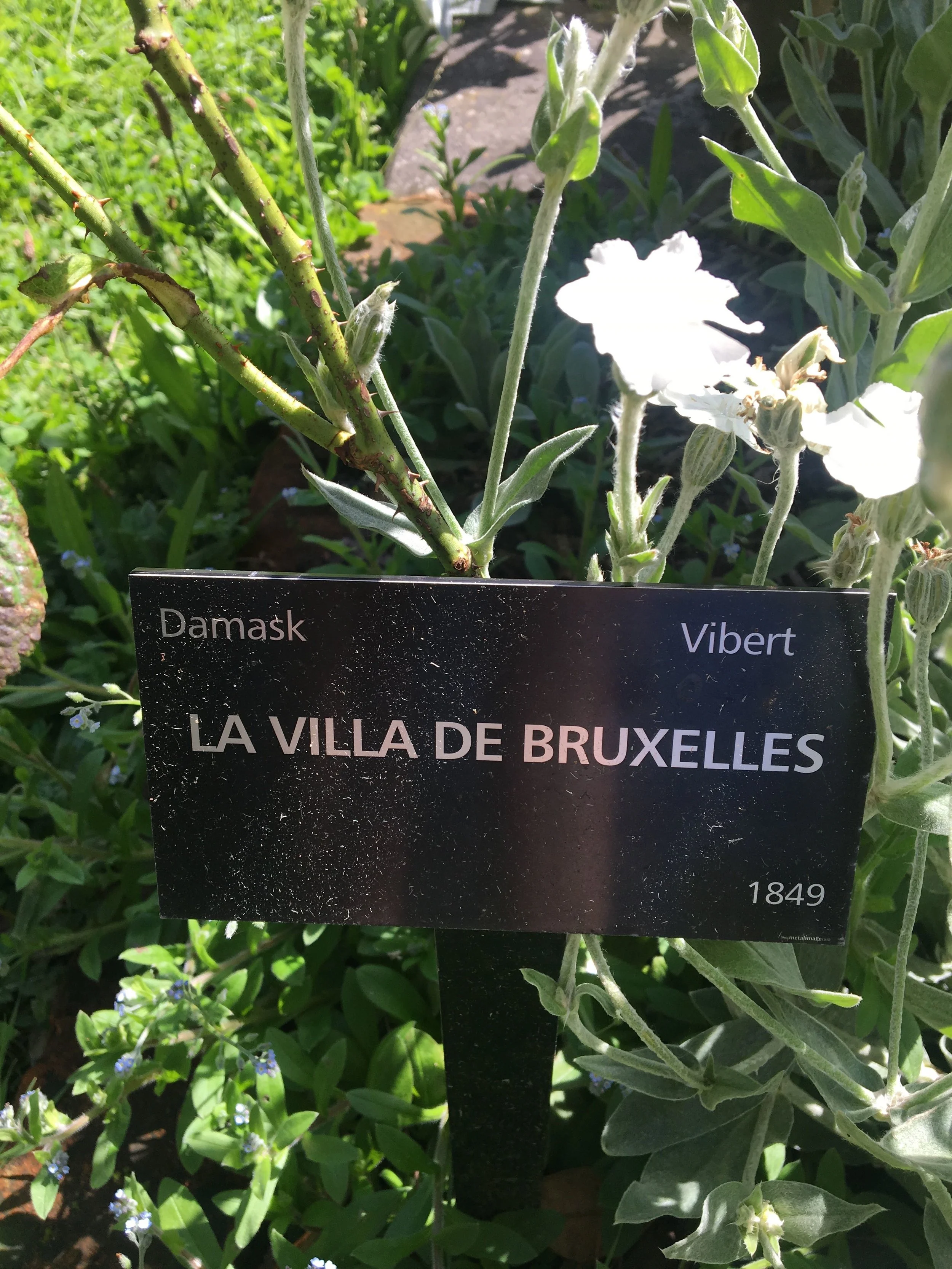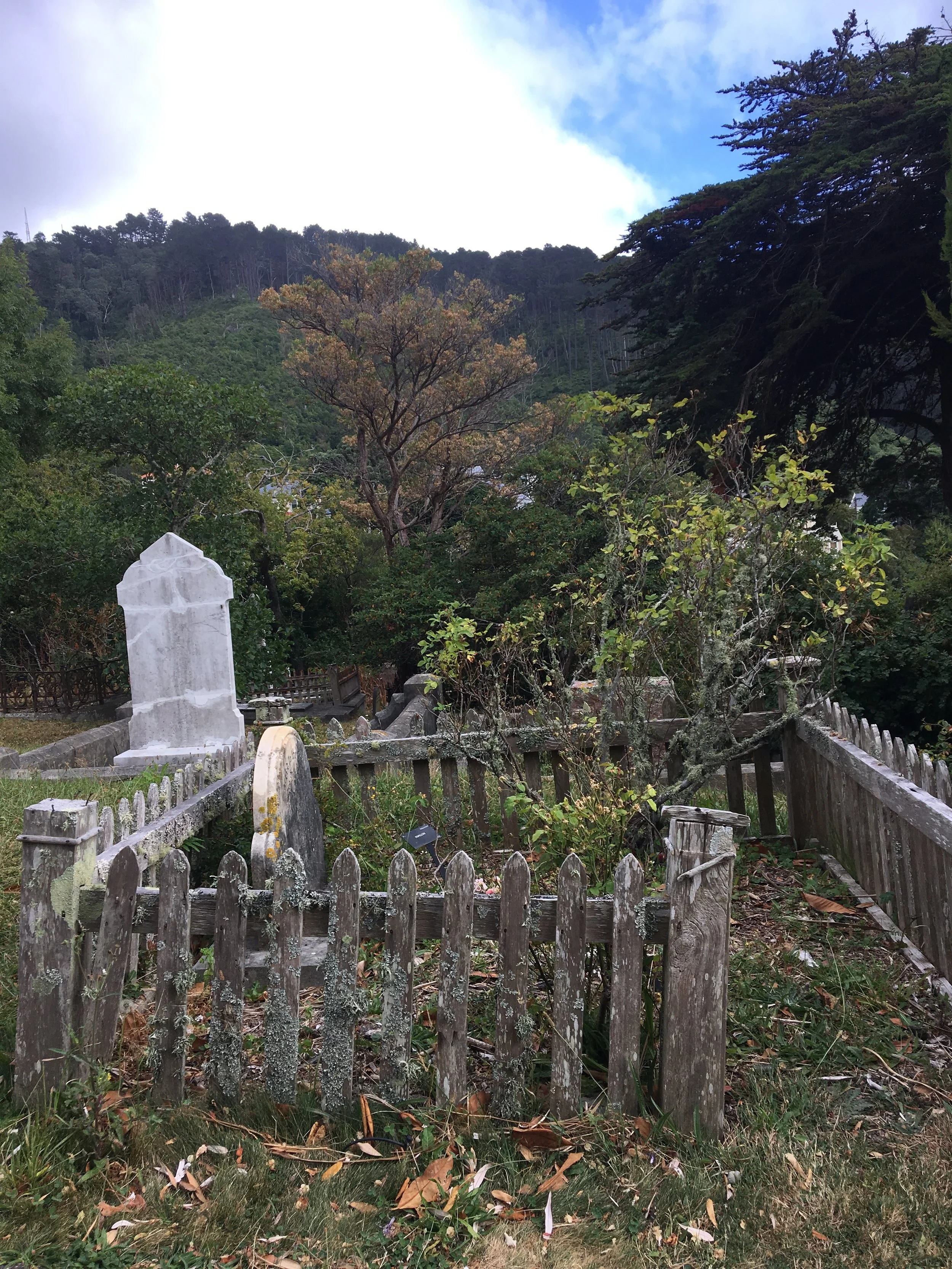I’m not a rose expert, old modern or otherwise. I’m an unashamed amateur, a lover of roses who has a handful of secondhand books on the subject and a very keen eye. I’m a gardener who’s trying to cram as many roses into my own garden as is physically possible, when nobodies looking.
I really don’t know very much about roses is what I’m really trying to say. If you’re after a detailed blog on old roses you’ll be sorely disappointed. If, on the other hand, you’re happy to go on a short journey with an enthusiastic amateur then please keep scrolling down.
Now we’ve got that out of the way we can get on with the blog. And I want to start with a question. What is an old rose?
According to all my rose books, old roses are all the rose types before the moderns. Modern roses are Hybrid Teas and Floribundas. These are the common roses of the twentieth and twenty-first century. They produce big flowers that keep on flowering in every colour imaginable. There are different kinds of moderns. There are the mid-century moderns with names like Diamond Jubilee and Josephine Bruce; the twin-sets and pearls set who drink tea in china cups while sitting bolt upright in high-backed chairs. Then you’ve got the eighties crowd with their big hair, big shoulder pads and glasses of Tequila Sunrise with their big lunches that someone else pays for. These roses go by the name of Sexy Rexy and Sheer Bliss.
The very first Hybrid Teas were bred in 1867, rubbing shoulders with the older types of roses like the Bourbons and the Hybrid Perpetuals. It seems that old roses are all about bloodlines.
Personally, I prefer to classify old roses as ‘old fashioned roses’. That way no one can accuse me of getting my classifications all wrong. All a rose has to do to join this particular club is to look and behave old fashioned. These are roses that evoke a feeling of nostalgia for a bygone age, which, like a classic piece of furniture, say a Bentwood chair or a Turkish rug, look good in any setting. The emphasis here is on the word ‘fashion’. A rose that looks and behaves ‘fashionably old’.
You’re going to meet 17 different old fashioned roses. You’ll get to know some of them better than others. Nonetheless, you’ll get a good feel for each ones personality and individual style. Just like people, some roses are big and flamboyant and put on a brief dazzling performance before retiring. Other roses are small and demure and faithful, blooming all summer long.
Rosa rugosa ‘Alba’.
The first rose I want to introduce you to is a species rose called Rosa rugosa ‘Alba’. A species rose is a wild rose. They’re from Japan, China, Korea and eastern Siberia.
Here I must turn to Nancy Steen. For New Zealand readers especially, but interesting for all ‘old’ rose’ enthusiasts, I can heartily recommend Nancy’s book ‘The Charm of Old Roses’, which was published in 1966.
‘R. rugosa has been called the Hedgehog Rose - and no wonder, as it is almost as difficult to handle as that small, well-armed animal; though both hedgehog and rose are the gardener’s friends. However, once this rose has been firmly planted, it is possible to leave it entirely alone except for the occasional removal of spent blooms; but even this small service is not absolutely necessary, though autumn flowers appear more regularly if it is carried out..’ (The Charm of Old Roses by Nancy Steen, 1966)
Rosa rugosa ‘Alba’.
Most Rugosas have magenta coloured flowers. Some have soft pink flowers, some have white and a few rare ones have yellow. Rugosas have distinctive, deeply-veined, bright green leaves and produce large orange hips, which contain more vitamin C than any other rose hip.
While most roses like clay soil, Rugosas happily grow in sandy soil and don’t mind salt -laden winds. They make a great hedge or planted together in small groups.
Rosa rugosa ‘Alba’.
Rosa rugosa ‘Alba’.
Rosa rugosa ‘Alba’.
I photographed R. rugosa ‘Alba’ two weeks ago. It’s the end of summer and the hips are growing. They look like crabapples and appeared well before the flowers finished.
Rosa rugosa ‘Alba’.
My next rose is a rambler called ‘Felicite Perpetue’, bred by Jacques in 1827. The first photograph was taken in spring, well before the rose did its summer growing. You can’t really see the rose at all. Within a matter of weeks it’s colossal.
Felicite Perpetue.
Monsieur Jacques was the head gardener to Louis Philippe, later King of France, and named this rose after his two daughters: Félicité and Perpétue.
And it is here again that I must turn to Nancy Steen. ‘This rose has practically evergreen foliage of a dark, reddish-green colour, and huge sprays of small creamy flowers, blush-tinted on the outside. Each bloom has masses of tiny, closely-packed petals…Félicité et Perpétue is, without doubt, the most rampant and indestructible rose in the country (that county being New Zealand)…we have to treat it drastically as it is such a vigorous grower and would soon take charge of our garden. Immediately it has flowered we cut out all the old wood at ground level, and then train no more than six strong new shoots along a wire fence.’ (The Charm of Old Roses by Nancy Steen, 1966)
Felicite Perpetue is delicately scented. Its flowers remind me of paper flowers made out of white doilies.
Felicite Perpetue.
Felicite Perpetue.
Felicite Perpetue.
Felicite Perpetue.
Felicite Perpetue.
Look for a small brown headstone in the mid-left of the photo above. Just in front of it are a few pink dots. These are the flowers of a rose called Sarah Van Fleet.
Sarah Van Fleet.
Sarah Van Fleet is a Hybrid Rugosa. Unlike her parents, who’re very robust, Sarah is susceptible to rust. She has lots and lots of thorns, as you’ll see in the close-ups. According to rosarian Peter Beales, ‘Sarah Van Fleet was raised by Van Fleet in America in 1926. In good soil she makes a dense, upright-growing shrub to about six feet…The flowers are beautifully furled and pointed at first, later open semi-double. They’re silvery-pink in colour, very tightly scented and produced freely from the beginning of summer right through to winter.’
Sarah Van Fleet.
Sarah Van Fleet.
Sarah Van Fleet.
Sarah Van Fleet.
Sarah Van Fleet
Sarah Van Fleet.
Indica Major.
And now we meet our first China rose, Indica Major.
Unsurprisingly, China roses originated in China where roses were grown and new varieties produced long before 1792, which was when they first appeared in Europe.
Indica Major.
Indica Major.
Indica Major.
Unlike nearly all of the roses available in Europe in the late 1700s, which flowered once, most of the Chinas flowered their way through summer. They had several other unique characteristics too. Their flowers had distinctive pointed centres, and some of them were a proper red, not the purplish-reds found in Europe at the time. Also, China roses changed colour as they aged, growing darker in colour rather than fading.
Indica Major is a hybrid of ‘Old Blush China,’ which was one of the first China varieties to arrive in Europe. It’s a once flowering rose that is unscented. But no matter, it’s a beautiful rose, like layers of white tissue that have been dipped in the palest pink dye. It’s a tall rose that happily scrambles through shrubs.
Indica Major.
Indica Major.
Chapeau de Napoleon.
Chapeau de Napoleon.
Chapeau de Napoleon is a Centifolia Moss rose. Moss roses are Centifolia sports (freaky mutated offspring of the parent plant). In the case of this rose it was said to be found growing in a crack in a wall in Switzerland and introduced in France by Vibert in 1826. Moss roses all have some kind of configuration of soft, often sticky, bristles on their stems and sepals. Chapeau de Napoleon is unique because its ‘moss’ formation on its calyx is different to the rest of the Moss Roses. (Sepals are the green leaf-like structures at the base of the flower. The calyx is the name given to the collection of sepals. Sepals are the fingers and the calyx is the hand.)
Chapeau de Napoleon was named after the three-cornered French hats that the soldiers wore in Napoleon’s time. That’s because the mossy calyx had three corners, just like one of these hats.
It’s a highly scented rose that has the distinctive Centifolia petal shape. No wonder they were called ‘Cabbage Roses’. When in full bloom its flowers are doubled and quartered. This rose is also called ‘Crested Moss’ and Rosa x centifolia cristata, which is its proper name.
The sign beside Chapeau de Napoleon says that the rose was bred by someone called Kirche in 1827. I couldn’t find out anything about Kirche or his/her association with this rose.
Chapeau de Napoleon.
Chapeau de Napoleon.
An unnamed rose.
An unnamed rose.
An unnamed rose.
An unnamed rose.
There are three kinds of rambling roses: Rosa sempervirens, Rosa wichuraiana and Rosa multiflora. I love rambling roses, especially when they give the impression that they’ve overrun their space. They give a wild, romantic, untamed feel to a garden.
Rosa multiflora.
Rosa multiflora.
Rosa multiflora.
Rosa multiflora’s flowers are single white flowers with yellow sepals. Looked at from a distance, the flowers look cream coloured.
Rosa multiflora.
Rosa multiflora.
This is an astonishingly beautiful rose. ‘It’s ‘a Damask raised by Vibert in 1849. It makes a rounded, very leafy, prickly bush about 1.6m high with lax sprays of large, flat, fully double, well-scented flowers. It is in all ways outstanding among old roses’ (‘Roses’ by Roger Phillips and Martyn Rix, 1988).
Damask roses are one of the oldest group of roses. There are Summer Damasks, which flower once and Autumn Damasks, which flower twice.
Just look at those fragile swirling layers of pink petals, with their subtle changes in tone!
La Villa de Bruxelles.
This Gallica rose started out life with a different name. It was called Rosa x francofurtana and then renamed Empress Josephine when this famous lady died. In case you didn’t know, and I didn’t, she was married to Napoléon Bonaparte and lived in a grand house with a grand garden called Château de Malmaison. She was a plant collector on an enormous scale and a lover of roses. She wanted to collect every rose in the world. When she divorced Napoleon in 1809 she had over 167 different roses in her garden. At this time French nurserymen reckoned there were more than 1.200 types of roses that had been named. Empress Josephine is a rose that needs the support of other shrubs to stop it flopping about.
Gallica roses are one of the very very old types of roses along with Albas and Damasks.
Empress Josephine
F. J Grootendorst is a very hardy Hybrid Rugosa, bred in 1918 by De Goey with small, red, unscented, carnation-like flowers. They bloom continuously from summer to autumn. The Grootendorst Rugosas (F.J, Pink and White) were the most familiar Hybrid Rugosas in the early twentieth century.
F. J Grootendorst.
F. J Grootendorst.
F. J Grootendorst.
F. J Grootendorst.
F. J Grootendorst.
F. J Grootendorst.
Some roses are tolerant of shade and poor soils; Complicata is one of these. It grows happily in the sun or in woodland. It’s a very old rose and while the rosarians know that a Gallica was one of its parents they havnt’t a clue who its other one is, but they’re having a lot of fun guessing. It’s a lush hardy bush that, if left unattended, can grow to 4.5 metres (15 feet) tall.
Complicata.
Complicata.
Complicata.
Complicata.
Complicata.
Jason from Fraser Valley Rose Farm in Canada makes great youtube videos about roses. I just watched his video on Gallica roses. He raves about Complicata, describing the plant as luminous looking, which I’d have to agree with. I wished I’d watched his rose videos before I wrote this blog. He communicates in an easy 5 minutes what has taken me weeks to figure out.
Hansa.
And here’s another of those rugged Rugosa’s. This one has fragrant magenta coloured flowers and orange hips ( a great colour combination if you ask me).
Hansa.
In the photo above you can see a low hedge of Hansas. I’m going to plant a line of Rugosas along a waist high fence at home, just as soon as I move a fig and an astelia out the way.
Hansa.
Hansa.
Hansa.
Hansa.
Nancy Steen must have the final say on Rugosa roses. ‘As labour-saving plants the pure Rugosa roses are without peer and all are highly decorative, having magnificent foliage, beautiful flowers, and showy heps. Such garden treasures are good when time for measured and gracious living is scarce and precious.’ (The Charm of Old Roses, 1966)
Nevada is Spanish for ‘white’. Pedro Dot bred Nevada in Spain in 1927. This rose makes a large dense bush with long arching shoots, which can grow up to 3 m high and 3 m wide. The bush is covered in flowers in summer. I’m telling you this so you know what one of these roses would look like in your garden. The Nevada in the cemetery is old and must fend for itself. None of the roses are watered (and it’s been a very dry summer). It’s planted in a spot that cops the full force of the northerly winds, which are usually gale force.
The cream flowers take on a pinkish tinge in hot weather. These fade to white in the cold.
Nevada is Dot’s most famous rose. He was the son of a rose breeder and his own sons went on to become rose breeders too. Rose breeding is as much creative endeavour as it is horticultural. Each rose breeder has their own style. ‘If you hybridise a rose, you get something that no one else has seen,’ Dot said. He often chose roses from his seedlings that had a wilder and more extreme character then its parents. He was a Catalan after all. He bred 178 new roses and ‘quietly influenced the course of rose history.’ (Pedro Dot by Ed Cunningham, The Rhode Island Rose Society). In other words, he’d have been a lot more famous if he wasn’t Spanish.
Nevada.
Nevada.
Nevada.
Nevada.
Behind the iron gravestone are Alchymist and Nevada.
This is one of my favourite roses in the cemetery. Probably because it’s orange and I have this thing for orange roses and orange flowers in general. Also, I saw a beautiful photograph in one of my rose books of Alchymist growing in an apple tree at Sissinghurst Castle. Large, luscious, orange roses nestled amongst spring fresh apple leaves, the faded blue sky in the gaps. It was a scene from a garden in a fairytale or the movie Fantasia.
Alchymist is a modern rose bred by the Kordes family. They began breeding roses in Germany in 1887 and are still breeding roses in Sparriesshoop today. They produce disease resistant, cold-hardy good-looking, abundant-blooming and fragrant roses. They have a series of ‘Fairytale roses’, with names like Cinderella Rose and Brothers Grimm Rose, which are said to rival David Austin’s roses for their old fashioned appeal.
Alchymist.
Alchymist.
Alchymist.
I’m showing you photographs of Alchymist taken at two different times. Here at the Bolton Street Cemetery it is treated as a climber but I’ve read that you can plant it as a shrub.
Alchymist.
Alchymist.
Alchymist.
Alchymist.
Alchymist.
I guess you can tell that I love this rose. I’ve just made you flick through 8 photographs of it. I’ve ordered Alchymist from Wairere Nursery and it’s on its way to me from Hamilton as I write.
Here’s another orange rose, though some call it yellow. It’s a Tea. The Tea is also from China like the Chinas but it isn’t classified as a China. I don’t know what the difference is between a China and a Tea, when I know I’ll let you know. This is what Roger Phillips and Martin Rix have to say about Teas. I bought their book called ‘Roses’ for $2.00, secondhand (a bargain at ten times that price).
‘Tea roses are generally either climbers or small, sparse bushes, with a continuous succession of large flowers of great beauty, in shades of pink, buff or light yellow. They have few thorns and are rather tender, growing best around the Mediterranean, in California and Australia.’
I love reading descriptions of roses. Here’s what Rogue Valley Roses in America have to say about Lady Hillingdon. ‘Lady Hillingdon is so scrolled, so lusciously drooping, so honey-butter in its colour tones, one scarcely knows whether to leave it in the breakfast table bouquet or spread it on the toast. This is definitely a tea that will delight even the most hardened ‘modern rose-only’ folks with its vigor, health, reliable rebloom and fragrance. The striking deep purple of the stems and new foliage will seem familiar to the Hybrid tea fan venturing to purchase a true tea for the first time. It is also a tea that will grow in a colder climate.’
Lady Hillingdon.
Lady Hillingdon.
Lady Hillingdon.
This rose was named after Alice Harbord-Hamond, who became Lady Hillingdon when she married the second Lord Hillingdon. She became famous for this excerpt from her journal. the ‘his’ is her husband. ‘When I hear his steps outside my door I lie down on my bed, close my eyes, open my legs and think of England’.
There is a climbing Lady Hillingdon that is supposed to be very vigorous. The bush version is said to have a tendency to become thin and ungainly.
Lady Hillingdon.
The last rose you’re going meet is Perle d’Or (meaning pearl of gold), the Sweetheart or Buttonhole rose. Some people think it’s a Polyantha and others a China Rose. It was bred by Joseph Rambaux in 1875 and introduced by Francis Dubreuil in France in 1883 (at least these are the dates on ‘the wiki’, neither of which is the same date that’s printed on the sign).
Wellington has had a dry summer, which will be obvious in the last two photographs taken two weeks ago. The first two were Photos were taken in early summer. Perle d’Or is a rose that keeps on flowering. Lots of exquisite fragrant blooms in every shade of cream, peach, apricot and salmon. The cherry red hips are almost bigger than the buds.
According to my book ‘Roses’, the first Polyantha roses were perpetual-flowering dwarfs of Rosa multiflora crossed with a dwarf China. These first Polyanthas had no scent but were hardy and produced lots of flowers. Like I said right back at the beginning - rose classification is all about bloodlines.
Perle d’Or.
Perle d’Or.
Perle d’Or.
Perle d’Or.
Isn’t this little rosebud perfect? Bring back the buttonhole I say!
As I said earlier, none of the roses at the Bolton Street Cemetery are watered. Apart from a light prune, for most, and a mulch, they’re left to fend for themselves. We’ve had a long dry and windy summer in Wellington. I bet their cousins ‘The Moderns’ who live next-door at ‘The Lady Norwood Rose Garden,’ and are fussed-over and indulged (but not sprayed), would wither and die if they had to live like the old roses (battling weeds and drought and wind). Maybe that’s another defining characteristic of old roses - they’re tough!
In my next blog I’m going to explore the idea of planting roses in a naturalistic looking garden. I’ll also finish my series on the old roses at the Bolton Street Cemetery, looking at its most gothic looking section. I’m going to be posting every second Sunday, rather than weekly.


































































































